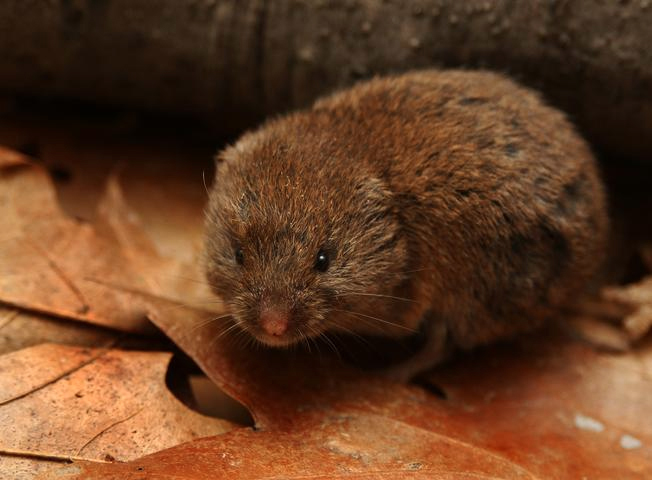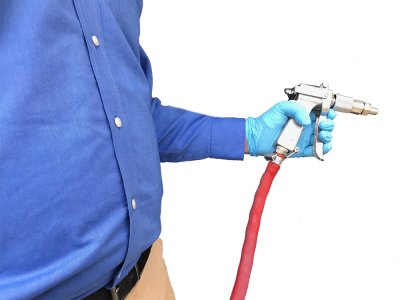
VOLES
Scientific Name: Microtus arvalis
Fun Fact: The highest recorded vole population density is 2,000 voles per acre.
Lifespan: Up to 1 year but average 3-6 months.
Description
A vole is a small rodent that is a relative of the mouse. Voles are sometimes known as field mice or meadow mice. It has a stouter body, a shorter, hairy tail, a slightly rounder head, smaller ears and eyes, and differently formed molars. They can grow between 3 and 9 inches.
Behavior
Voles are active through all parts of the year and do not hibernate. Unlike their cousin, the mouse, they are active at all times of the day and night. They build and maintain above ground runways which expand like a railway system throught it’s entire home range. Runways appear as irregular paths of clipped and trampled grass that is 1-2″ wide. They seldom stray from these runways as they provide orientation and quicker, safer travel. Voles are poor climbers and dig nests 30-40 cm deep to store food, raise young and as a place to rest and sleep.Many voles are accomplished swimmers. The European vole can swim up to 50 ft. underwater.
A 2016 study into the behavior of voles, Microtus ochrogaster specifically, found that voles comfort each other when mistreated, spending more time grooming a mistreated vole. Voles that were not mistreated had levels of stress-hormones that were similar to the voles that had been mistreated, suggesting that the voles were capable of empathizing with each other. This was further proven by blocking the vole’s receptors for oxytocin, a hormone involved in empathy. When the oxytocin receptors were blocked this behavior stopped.This type of empathetic behavior has previously been thought to only occur in animals with advanced cognition, such as humans, apes, and elephants.
Where Do Voles Live?
Vole primary habitats are pretty much everywhere except dense forests. Meadows, heath lands, and fallow land are ideal habitats for voles. The secondary habitats are mainly agricultural fields whereby shallow sloped areas are preferred. Voles are common in North and South America, Europe and Asia. The natural food of the common vole is grass, but it also feeds on many agricultural crops (within secondary habitats) and here its reproduction is faster than in primary habitats because of the abundance of food.
Reproduction
Voles are pregnant from 16 to 24 days and litters are between 3 and 6 pups. Female voles can breed just 13 days after being born. The average life span of a vole is 4 months and in that time they can breed up to 3 times. Reproduction density varies and can even stop when populations become too high. The amount of offspring is also affected by the amount and quality of food and light.
Signs of Vole Damage
- Holes in lawn that are clean and round about 1.5 inches across. They are often in line with the runways
- Trees and plants showing irregular gnaw marks about 1/8″ wide x 3/8″ long x 1/16″ deep
- Damaged tree roots which can lead to delayed or lack of fruit trees
- Yellow, wilted plants
Dug up, stolen bulbs
Predators
Voles are prey of martens, owls, hawks, falcons, bobcats, coyotes, snakes, weasels and lynx. Vole bones are often found in the pellets of several types of owls ncluding the short-eared owl, northern spotted owl, saw-shet owl, barn owl, great gray owl and northern pygmy owl.
How To Get Rid of Voles:
To get rid of voles you have to start with your yard. Dispose of any trash, ground clutter and brush piles. Voles love to hide in loosely packed brush piles. Try not to use any mulch around trees and get rid of the mulch you have. During winter months, keep snow away from trees at least 3 ft.
Voles love to eat seeds as well as plants from your garden so make sure all bird feeders are taken down and clean loose seed up that has fallen to the ground. If you’ve got pine trees, rake up the needles, they like to eat those, too.
Keep fruit from fruit trees off the ground. Voles especially love apples so pay extra attention to getting all fallen apples off the ground.
Get a bunch of Victor mouse traps. They’re cheap and there’s a reason they’ve been around for a hundred year…..they work! Make sure to put the trigger end of the trap at a 90 degree angle to vole runways. Peanut butter mixed with little bits of apple is a great bait.
(706) 221-8000
REQUEST A QUOTE

100% Satisfaction
There is a reason our work is guaranteed…we do it right. If you would ever have a problem with pests while we are in charge of your pest control, we will work until the problem is resolved. Our contracts provide you with quarterly service and we will take care of any problems that may happen to arise between visits.
We Guarantee It!

Request Free Pest Inspection
EMERGENCY SERVICE AVAIALBLE
Request Free Pest Inspection
EMERGENCY SERVICE AVAIALBLE

